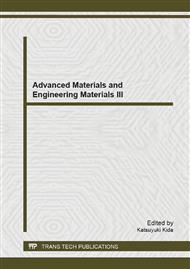p.747
p.751
p.755
p.760
p.765
p.769
p.773
p.777
p.781
Environmental and Economic Comparative Analysis between Lithium Ion Battery and NiMH Battery of Electric Vehicle
Abstract:
With the rapid development of electric vehicles, power battery market demand rapidly expanding, battery scrap and recycling has become a serious problem. Based on the analysis and forecast of waste battery amount from 2014 to 2024, the paper researched the future theoretical metal recycling amount of power battery in China. Life cycle assessment method is used to establish a waste lithium ion batteries and nickel-metal hydride batteries recycling process of environmental impact assessment model, and the data lists of recycling process are built. The environmental impact load are analyzed and compared. Through the establishment of economic analysis model of waste battery recycling process, the economic performance is quantified. To develop the recycling of waste power battery mode, laws, regulations and relevant technical standards for China[, this paper provide the method reference and data support.
Info:
Periodical:
Pages:
765-768
Citation:
Online since:
February 2014
Price:
Сopyright:
© 2014 Trans Tech Publications Ltd. All Rights Reserved
Share:
Citation:


